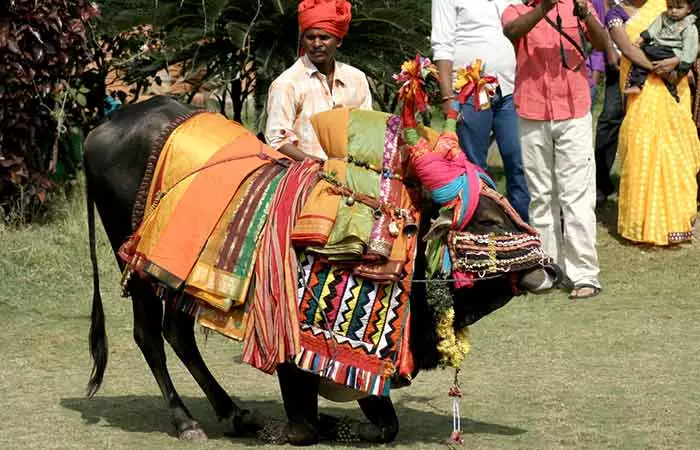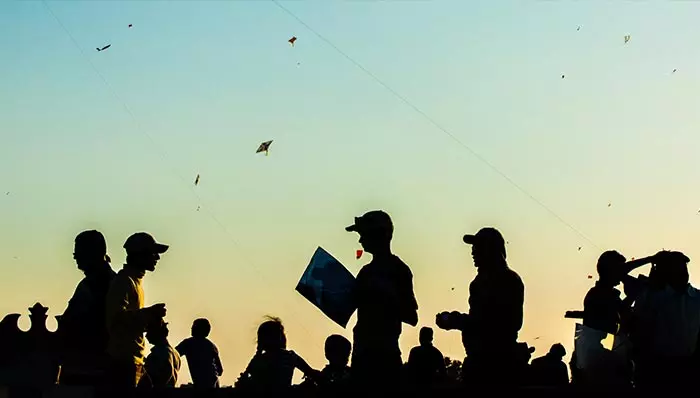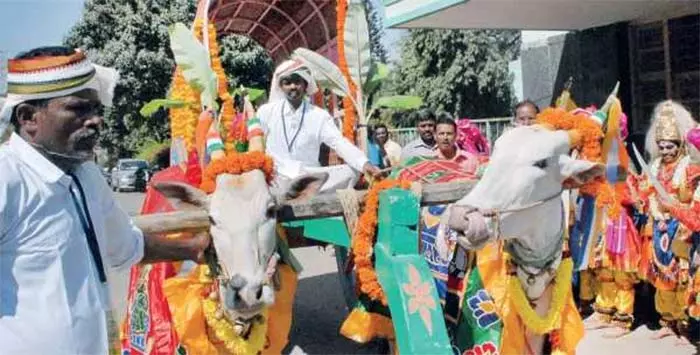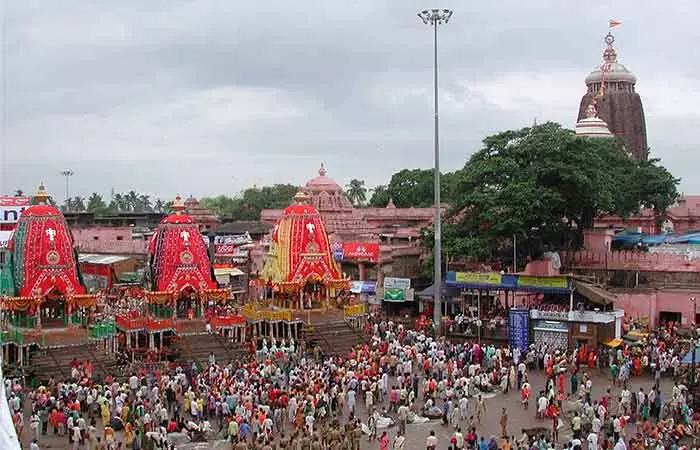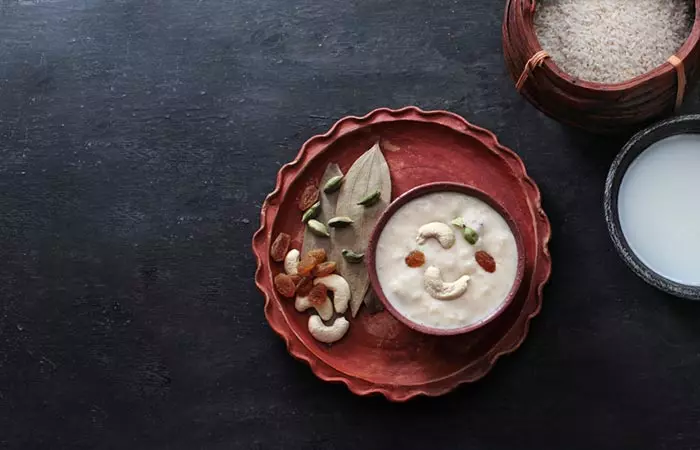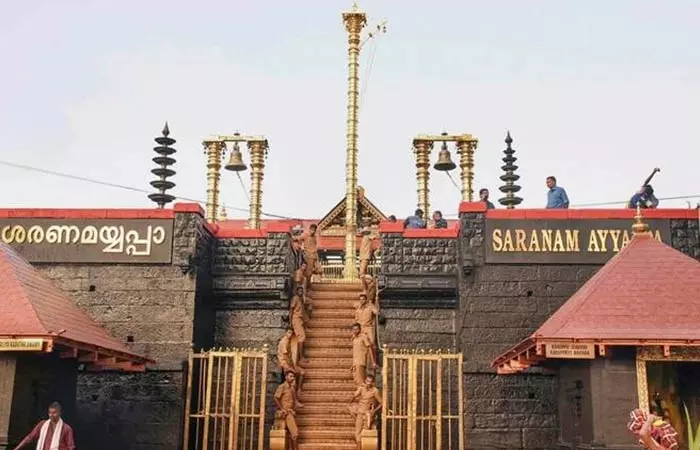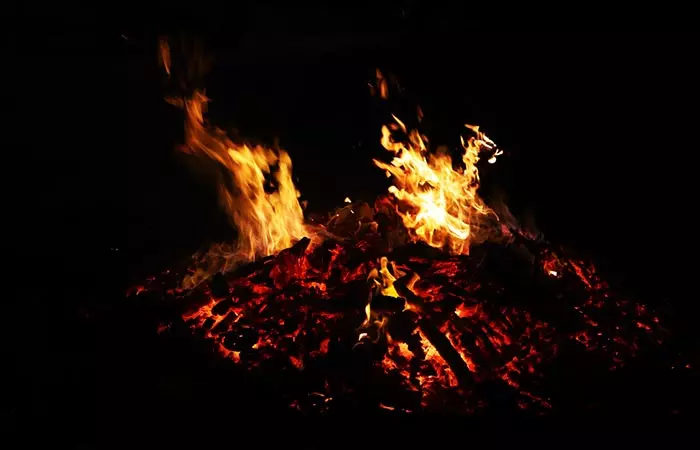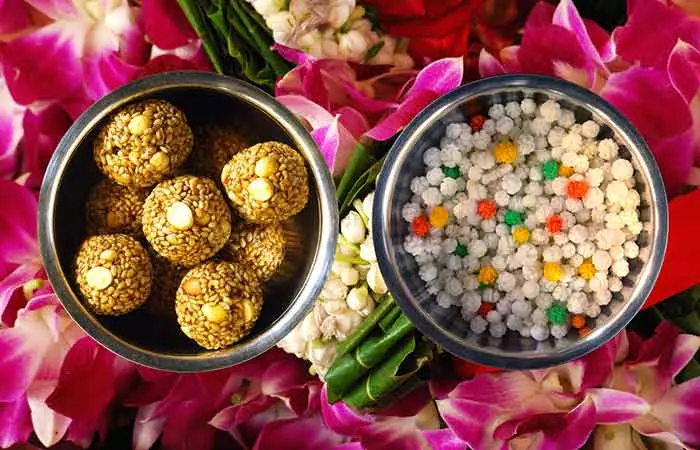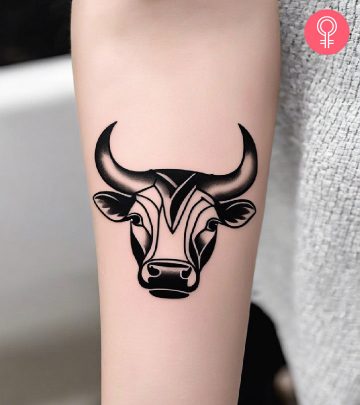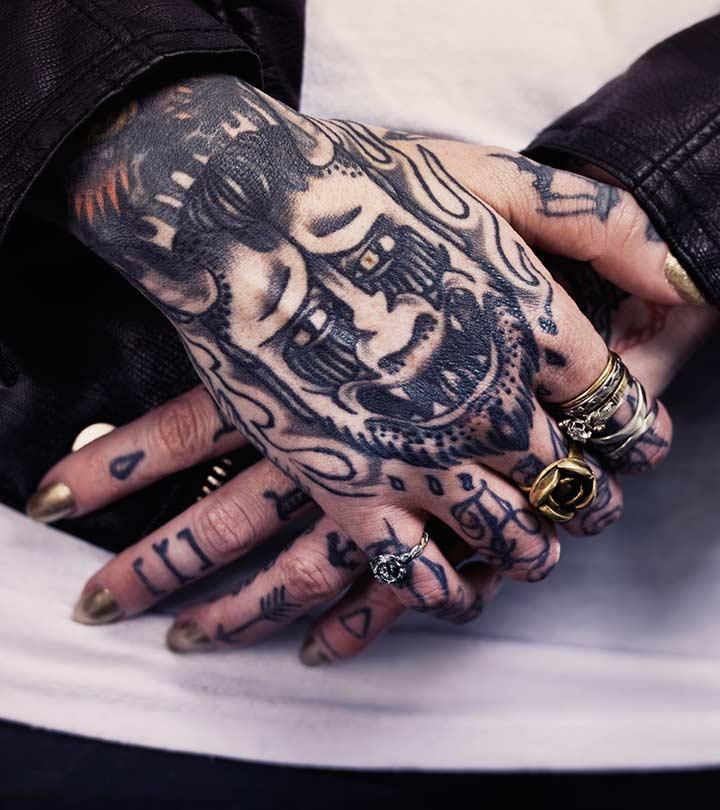How Different Indian States Celebrate The Festival Of Makar Sankranti
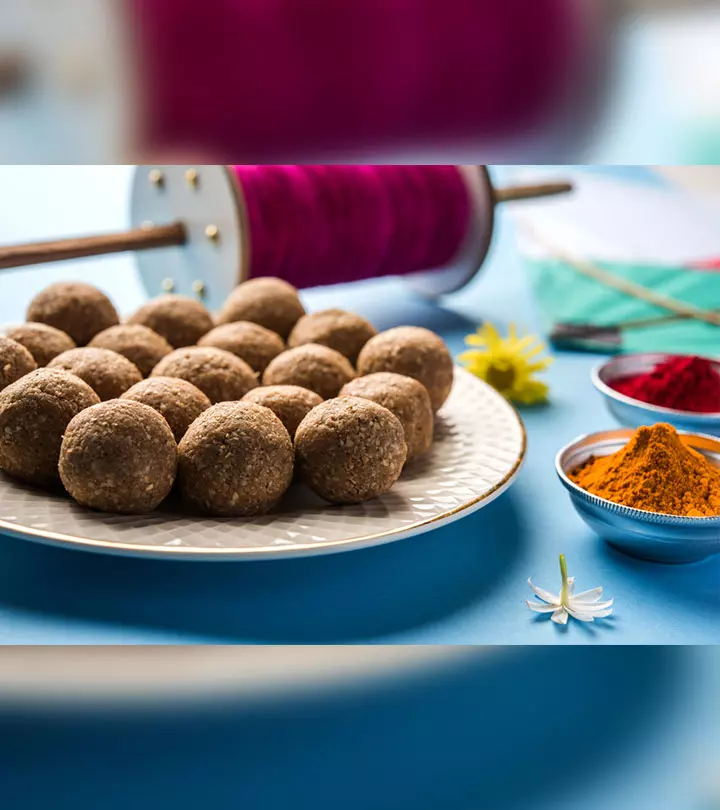
Image: Shutterstock
Makar Sankranti is a festival that is celebrated in the month of January. The festival usually falls on January 14th and is supposed to mark the beginning of longer days and shorter nights. It is celebrated with much aplomb across all Indian states and marks winter solstice for India as well as its sister, Nepal. The festival is particularly dedicated to the God of the sun, Surya and is an integral festival in Hinduism. During this time, many religious people take a dip in the holy rivers of Yamuna, Kaveri, Godavari and others to “cleanse” themselves from their sins. January is often referred to as the season of the harvest and almost every state has a unique twist to their Makar Sankranti celebrations. So let’s take a look at how India celebrates this wonderful festival.
1. In Assam As Magh Bihu
The North-eastern state of Assam celebrates “Magh Bihu” with some wonderful traditional games, dance, food, and a bright sense of liveliness. During the festival, young Assamese people create huts made of leaves, hay, and bamboo. They eat festive food within those huts and then set fire to them the next day. Their traditional games include buffalo fighting and a game called “Tekeli bhonga”.
2. In Tamil Nadu, Telangana, And Andhra Pradesh As Pongal
The first day of Pongal is referred to as Bhogi. On this day, people believe in getting rid of their old possessions like clothes and other materials by setting fire to them. On the second day of the festival, people pay their respects to Surya and visit their loved ones. They also prepare a special dish that contains jaggery, cashew nuts, raisins, fresh milk, brown sugar, and more. On the third day of Pongal, farmers start to decorate their bulls with flowers, paints and bells and feed them sugarcane and sweet rice. On the final day, people once again visit their loved ones and thank them and enjoy the festival.
3. In Gujarat As Uttarayan
Many people celebrate the festival by flying colorful kites in the sky and in the city of Ahmedabad, the people organize kite flying festivals and conduct competitions. On the day of Uttarayan, a delicious special vegetable dish called “Undhiyu” is prepared in many Gujarati households. January 14th is called Uttarayan and the 15th is called Vasi Uttarayan.
4. In Karnataka As Suggi
On the day of Suggi which roughly translates to “harvest festival”, young Kannadiga women will visit their close friends and exchange a delicious plate of sweets called “Ellu Bella”. On this day, it is believed that only “sweet words” should be spoken and the Kannada phrase, “ellu bella thindu olle mathadi” is spoken. The phrase roughly translates to “eat a mixture of jaggery and white sesame seeds and only speak sweetly.” Farmers will also dress their bulls in colorful attire for the festival.
5. In Orissa As Uttarayan Yatra (Specifically In The Lord Jagannath Temple)
A traditional pudding dish “Makar Chaula” which is prepared using banana, jaggery, rice, coconut, sesame seeds and more is offered to Lord Jagannath along with rasagola, chhena, and khoi. During this time, people from the state celebrate the festival by attending melas (fairs, carnivals) and worshipping their deities.
6. In West Bengal As Poush Sankranti
The festival is named to mark the end of the Bengali month of Poush (according to the Bengali calendar). The three day festival consists of much celebration, and preparing some delicious Bengali sweets using palm date syrup and newly harvested paddy. Many Bengalis will leave the region of “Gangasagar” and wade into the open seas. It is believed that this will help cleanse all of their sins and attain salvation. On the day of Sankranti, the Goddess Lakshmi is worshipped and the puja is called “Baharlakshmi Puja”
7. In Kerala As Makaravilakku
In the state of Kerala, Makar Sankranti is celebrated at one of India’s oldest and most popular temples, Sabarimala Sree Ayyappa temple in the central Kerala district, Pathanamthitta. The temple is located on the Western Ghat mountain ranges.
8. In Punjab As Lohri
Although Lohri is celebrated on January 13th each year, the festival is also celebrated to express the happiness of a new harvest and crop. In the evening, people will create bonfires and celebrate around them. They circle around the flame and throw popcorn, puffed rice, and other munchies around the rising flames. The idea behind this is that people are supposed to throw away their negativity and any ill feelings they may be harboring into the fire to start afresh. The celebration is followed by Bhangra, prasad, greetings, and gifts.
9. In Parts Of Western, Northern, And Central India As Makar Sankranti
In the states of Madhya Pradesh, Goa, Maharashtra, Rajasthan, and certain northern states like Haryana, Bihar, Uttarakhand, and Sikkim the festival is referred to as Makar Sankranti. In Madhya Pradesh and Maharashtra, married women are invited into the homes of their loved ones to celebrate a tradition called Haldi-kumkum. The woman who runs the house will gift the married women with a special utensil that she has purchased for the occasion. In the state of Maharashtra, people are greeted with sweets and a phrase that means that you should speak sweetly.
India is a diverse country and almost every state has traditions that are extremely unique to it and wonderful. When people say “India is a continent disguising as a country”, they aren’t joking. In India, we find unity in diversity and that is exactly what makes our country and its traditions so extraordinary. Do let us know all of your thoughts in the comments section below.



